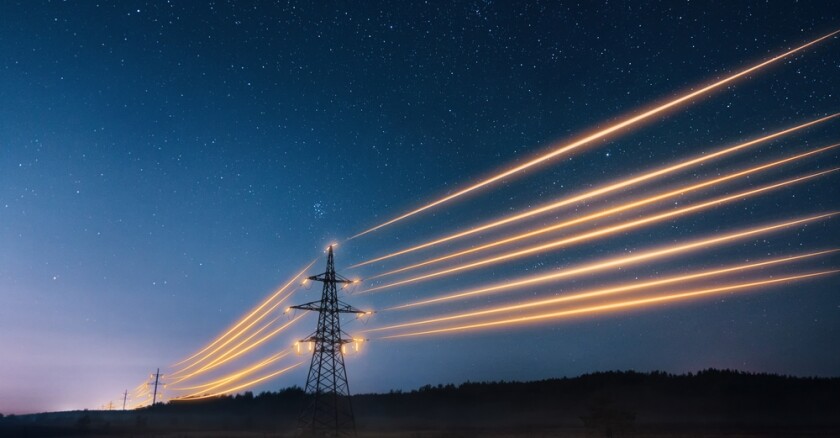The dramatic growth in GenAI and AI adoption is bringing increased demand for energy to power data centers. Where is this heading? How can we navigate a sustainable energy future with exploding technology usage?
May 19, 2024 •

Shutterstock
As generative AI surges in popularity in almost every area of life, an “inconvenient truth” is quietly coming up in more and more business conversations around the globe.
“Elon Musk recently made a bold prediction about artificial intelligence — and not the one about it being an existential threat to humanity. Musk said rising demand for power-hungry AI chips could soon lead to an electricity shortage.
“‘Next year, you will see that they just can’t find enough electricity to run all the chips,’ the Tesla CEO said at the Bosch ConnectedWorld conference late last month.
“While AI’s surging demand may not lead to mass electrical outages, the AI boom is already changing how data centers are built and where they’re located, and it’s already sparking a reshaping of U.S. energy infrastructure.
“Energy companies increasingly cite AI power consumption as a leading contributor to new demand. AES, a Virginia-based utility, recently told investors that data centers could comprise up to 7.5 percent of total U.S. electricity consumption by 2030, citing data from Boston Consulting Group. The company is largely betting its growth on the ability to deliver renewable power to data centers in the coming years.”
In this Global News video below, Alex de Vries, an expert from Amsterdam, says that “increased use of AI will bring an increase in energy demand and an increased use of fossil fuels, which will ultimately boost climate change.”
In a recent podcast, The Wall Street Journal highlighted how “AI Can Help Fight Climate Change, But It Also Adds to It.”
New Scientist recently wrote, “Over the next several years, many regions of the U.S. and Canada may struggle to ensure a reliable electricity supply amid soaring energy demand from the tech industry and electrification of buildings and vehicles.”
That story goes on to say: “More than 300 million people in the U.S. and Canada face the growing possibility of electricity shortages beginning as early as 2024 and continuing to 2028.
“In a recent report, the North American Electric Reliability Corporation (NERC) — an international regulatory authority overseeing the North American power grid — projected that a majority of regions in the U.S. and Canada will have insufficient electricity supply to reliably meet demand during extreme weather conditions.”
“Why it matters: The effects of new weather extremes on the grid may be seen throughout the summer if intense heat waves trigger energy demand spikes that test the limits of power infrastructures nationwide, officials have warned.”
“Attackers and vandals are targeting America’s electrical grid more than they have at any other point in the last decade, government documents show.
“Why it matters: Recent assaults on power infrastructure across the country have led to mass outages and prompted calls from both state and federal lawmakers for new security measures.
“The advancement of new technologies appears to have given rise to a new problem across the United States: a crippling power shortage on the horizon. The advent of these technologies, such as eco-friendly factories and data centers, has renewed concerns that America could run out of electrical power.
“These worries also come at a time when the United States’ aging power grid is in desperate need of repair. Heavily publicized incidents such as the 2021 Texas power outage, which was partially blamed on crypto-farming, exposed how vulnerable the nation’s power supply is, especially during emergencies. There have also been warnings from tech moguls such as Elon Musk, who has stated that the United States is primed to run out of electricity and transformers for artificial intelligence in 2025. …”
There are excellent reasons why Sam Altman, the CEO of OpenAI, has invested in nuclear energy.
“Tech firms and Silicon Valley billionaires have been pouring money into nuclear energy for years, pitching the sustainable power source as crucial to the green transition. Now they have another incentive to promote it: artificial intelligence.
“While generative AI has grown at lightning speed, nuclear power projects are heavily regulated and usually advance at a plodding pace. That’s raising questions about whether advances in nuclear energy can cut emissions as swiftly as energy-guzzling AI and other fast-growing technologies are adding to them.
“‘If you were to integrate large language models, GPT-style models into search engines, it’s going to cost five times as much environmentally as standard search,’ said Sarah Myers West, managing director of the AI Now Institute, a research group focused on the social impacts of AI. At current growth rates, some new AI servers could soon gobble up more than 85 terawatt hours of electricity each year, researchers have estimated — more than some small nations’ annual energy consumption.”
“The OpenAI CEO joined big-name VC firms Andreessen Horowitz and Atomic in a $20 million seed round of funding for solar energy company Exowatt. The Miami-based startup is developing a modular energy platform to power data centers at a time when AI is expected to substantially drive up the power needs of global data centers. AI advocates are on the hunt for cheap and rapidly scalable energy systems as the energy needs of the technology explode.
“Exowatt’s technology is a three-in-one, modular energy system roughly the size of a 40-foot shipping container. It uses what Exowatt CEO and co-founder Hannan Parvizian calls “a specially developed lens” to collect solar energy in the form of heat and store it in a heat battery. The stored heat is then run through an engine to convert it to electricity. Exowatt anticipates its solution could cut the cost of electricity down to $0.01 per kilowatt-hour once it hits scale.”
FINAL THOUGHTS
Blackouts have already been an issue for the U.S. power grid, especially in states like California and Texas.
Florida has recently taken steps to remove climate change considerations from Florida law and remove some hurdles to the approval of natural gas pipelines and remove language that authorizes state officials to set renewable energy goals.
In a post on social media platform X Wednesday afternoon, Gov. Ron DeSantis touted the law and two others he signed as “restoring sanity in our approach to energy and rejecting the agenda of the radical green zealots.”
Bottom line, both AI and climate change agendas have strong support across the U.S. and the world. How these two agendas will be reconciled in the years ahead will no doubt be an ongoing challenge — with huge implications for society.
Artificial Intelligence Infrastructure

Daniel J. Lohrmann is an internationally recognized cybersecurity leader, technologist, keynote speaker and author.
*** This is a Security Bloggers Network syndicated blog from Lohrmann on Cybersecurity authored by Lohrmann on Cybersecurity. Read the original post at: https://www.govtech.com/blogs/lohrmann-on-cybersecurity/ais-energy-appetite-challenges-for-our-future-electricity-supply


